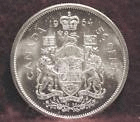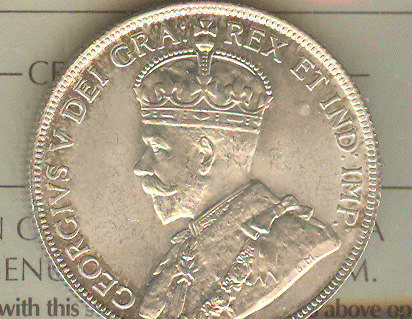WHAT ARE YOUR COINS WORTH?
-
Age
-
Scarcity
-
Condition
The most important factor is condition and age is the least important. For example in regards to age, we would pay you $10 for a 1991 Canada quarter yet we could sell an 1870 Canada Quarter for $5. In most cases the condition of the coin is the most important factor and in most cases we would have to see the coin to determine the condition or grade. If for instance you were going to buy an old car and it is dated 1955, the value would vary greatly if the car is not running and rusted versus a car which is in mint condition.
The same logic works in the collectibles market with some exceptions (some used stamps are worth much more than mint ones). The problem we most often encounter is that when people do their own research they look to sites like ebay and find a coin the same year as theirs and automatically assume their coin is of the same value. Coin condition is determined by a numerical grading scale which goes from 0 – 70. The most common grades are as follows: G-4 (well worn), VG-8, F-12, VF-20, EF-40 (some wear), AU-50, MS60 (Mint State), MS63, MS-64, MS-65. Any coins with a grade MS60 or higher are Mint State or have no wear whatsoever on them. The problem occurs when people go to the internet and see a coin of the same year as theirs in MS65 which is in pristine mint condition and they assume their coin which might be G-4 condition is worth the same price.
The only true way to find out the value of your collectibles is to try to sell them. There are hundreds of different price guides many of which are offered at better book stores. We carry them as well. Although an item is assigned a book value, that does not necessarily mean you will get that price. We have also seen instances where items sell far beyond their book value. If you are unsure of value and want a free quote, drop us a line with a picture of the item if possible.
WHAT’S THE VALUE OF YOUR COINS?
Many coins in the Canadian and Newfoundland series are very common and only worth their silver value. There are many hundreds that we could list and as mentioned the higher the grade or condition (especially on early issues) the higher the price. Of course, as silver and gold prices change so will the value of your coins which are related to the bullion value.
We really need to see your coins to give you a fair appraisal or offer but without being able to do that we can offer you some general guidelines based on what we see most often.
If you are buying coins – especially scarce ones, be sure to get the contact information of the person you are buying from and some ID as the market has been flooded with counterfeit coins from China in recent years and they are very good quality, In most cases, it would take an expert to tell the fakes from the real thing.
-
Common Newfoundland half dollars: $7.50 each and up each
-
Common Newfoundland 20 and 25 cents: $3.75 each and up
-
Common Newfoundland 10 cents : $1.50 each and up
-
Common Newfoundland 5 cents: 75 cents each and up
-
Common Newfoundland Large cents: $1.00 each and up
-
Common Newfoundland small cents: 10 cents each and up
-
Newfoundland $2 gold : $250.00 each and up
Coin Examples

coin-value-examples-1

coin-value-examples-2

coin-value-examples-3

coin-value-examples-4
1 CENT:
-
1885 and 1888 – $20 each and up
-
1880 Oval O – $75 each and up
5 CENT:
-
All before 1888 are scarce
-
1885: $100 each and up
-
1876 : $75 each and up
-
1873: $200 and up
-
1873H: $650 and up
-
1946: $800 and up
10 CENT:
20 CENT:
-
All are common – value depends largely on the grade and need to be priced individually
50 CENT:
-
All from 1904 – 1919 are common – this series depends largely on the grade or condition.
COMMON CANADIAN SILVER (1966 AND BACK):
-
5 cent silver:75 cents
-
10 cent silver:$1.50 each
-
25 cent silver:$3.75 each
-
50 cent silver:$7.50 each
-
Silver Dollars:$15 each
COMMON CANADIAN SILVER (1967):
-
10 cent silver:$1.10 cents
-
25 cent silver:$2.75 each
-
50 cent silver:$7.50 each
-
Silver Dollars:$15.00 each
COMMON CANADIAN SILVER (1967):
-
10 cent silver:80 cents
-
25 cent silver:$2.00 each
Scarce Canadian Coins:
SILVER DOLLARS
-
1948: $850 and up
-
1947 (any type): $80 and up
-
1946: $30 and up
-
1945: $100 and up
-
1938: $30 and up
50 CENTS
-
1948: $75 and up
-
1932: $125 and up
-
1921: very rare – beware of counterfeits – please call
-
1905, 1904 – $100 and up
-
1901 and earlier: $25 – $850 in low grade to $10,000 + in high grade
25 CENT:
-
1927: $10 and up
-
1915: $10 and up
-
1893, 1889, 1887, 1885, 1880,1875: all $50 and up if in problem free collectible condition
10 CENT:
-
1969 with a large date: $7000 and up
-
1889: $200 and up
-
1884: $50 and up/div>1875: $100 and up/div>
5 CENT:
-
1925: $50 and up
-
1921: $2000 and up
-
1884, 1875: $50 and up
CENT:
-
1922, 1923, 1925: $10 each and up
-
1858: $30 and up
